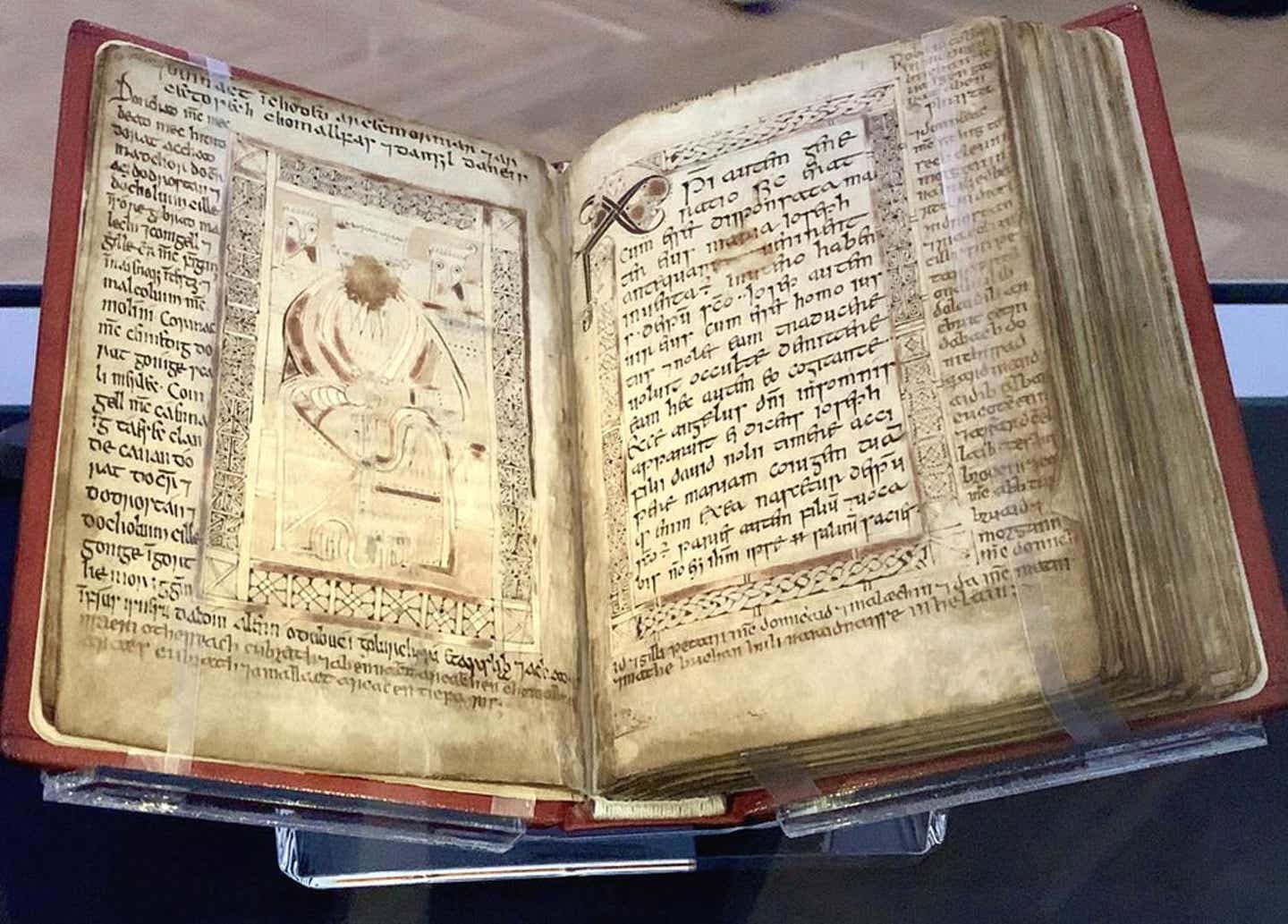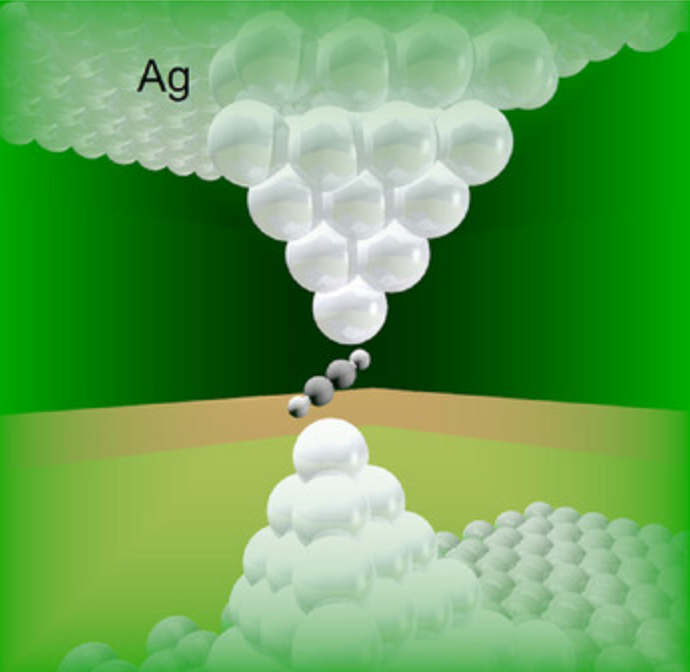Book of Deer: Archaeologists decode the secrets within Scotland’s oldest manuscript
This remarkable discovery comes after centuries of speculation and uncertainty surrounding the precise location of this historical treasure.

[Dec. 10, 2023: JD Shavit, The Brighter Side of News]
The Book of Deer is thought to be the oldest surviving Scottish manuscript. (CREDIT: Creative Commons)
In a major archaeological discovery, the ancient monastery associated with the creation of the Book of Deer, Scotland's oldest surviving manuscript, has finally been unearthed. This remarkable discovery comes after centuries of speculation and uncertainty surrounding the precise location of this historical treasure.
The Book of Deer, dating back to the 10th century, holds a significant place in Scotland's cultural and religious heritage, serving as a remarkable window into the early church, culture, and society of the time. Alongside its historical significance, the manuscript is renowned for featuring the earliest surviving Gaelic writing in Scotland, making this discovery a pivotal moment for the country's heritage and historical understanding.
The journey to uncover the long-lost monastery, which had remained an enigmatic piece of Scotland's history, unfolded through meticulous archaeological endeavors. The breakthrough took place near the ruins of Deer Abbey in Aberdeenshire, where a dedicated team of archaeologists and volunteers embarked on an ambitious excavation mission. Their diligent efforts led to the remarkable revelation of the monastery's exact location.
Ali Cameron, the lead archaeologist hailing from Cameron Archaeology Ltd, led the expedition and recounted their pursuit, saying, "A lot of the rest of the field had been disturbed, but we opened such large trenches in 2022 so that we had the best chance of finding early medieval features. We spent weeks excavating later material, including stone and other demolition material until we got down to the earliest layers and features two weeks before the end of the dig."
Related Stories
The critical turning point in the excavation came when the team reached the deepest layers of the site, uncovering vital features and collecting samples that would prove crucial in confirming the monastery's existence. Cameron continued, "I then led a team of students and volunteers, and we systematically cut sections through all the features, collected finds and samples, which are important as they are where the charcoal for dating will be."
These invaluable samples underwent meticulous processing under the watchful eye of Dr. Gordon Noble at the University of Aberdeen. Subsequently, they were sent off to the Scottish Universities Environmental Research Centre (SUERC) in East Kilbride for radiocarbon dating analysis, a pivotal step in ascertaining the age of the materials.
The suspenseful wait for the results of the radiocarbon dating was akin to a historical detective story, with Alice Jaspars, an archaeologist and PhD student specializing in the Book of Deer, recounting the experience: "It's almost an unwritten law, but on the last day or the last week of your excavation, you'll always find something really cool. We had a feeling about it. We had this horrible but exciting sense of anticipation, waiting to see if you have actually found what you think you have found. That painful waiting for the information about the dates is terrible. Then Ali, ever so coyly, sent over an email saying - 'I think you should check the dates.' I open it up, and it's just unbelievable. We found the monastery."
The Book of Deer, dating back to the 10th century, holds a significant place in Scotland's cultural and religious heritage. (CREDIT: Creative Commons)
The discovery of the monastery not only marks a monumental achievement for the field of archaeology but also unlocks a wealth of historical knowledge and significance. The Book of Deer, which was initially believed to originate from the Monastery of Deer in the Mintlaw area, offers a unique perspective on early church practices, cultural norms, and societal structures of the time. Its importance lies not only in its textual content but also in its role as the earliest surviving Gaelic manuscript in Scotland, providing invaluable insights into the linguistic heritage of the region.
Historical records indicate that the Monastery of Deer held the cherished manuscript in its custody by the year 1,000 AD, prior to its abandonment. Subsequently, the monks relocated to Deer Abbey, marking a transition in the historical narrative. The Book of Deer itself usually resides within the collections of Cambridge University, where it remains a prized artifact of Scottish heritage. However, last year, it made a rare public appearance at Aberdeen Art Gallery, allowing visitors to connect with this rich historical relic firsthand.
A new dig uncovered evidence of the monastery. (CREDIT: Creative Commons)
The importance of this discovery extends beyond the mere identification of a historical site. It signifies the preservation of Scotland's cultural heritage and offers scholars and historians an opportunity to delve deeper into the past. The manuscript's unique combination of Gaelic and Latin text paints a vivid picture of a bygone era, where religious devotion and cultural exchange were interwoven.
Moreover, the Book of Deer serves as a testament to the resilience and determination of the archaeologists and volunteers who dedicated themselves to this archaeological quest. Their unwavering commitment to uncovering the hidden stories of Scotland's past has resulted in an irreplaceable addition to the nation's historical narrative.
As scholars continue to analyze the manuscript and its newfound context, we can anticipate further revelations about early medieval Scotland and the enduring legacy of this extraordinary document.
For more science and technology stories check out our New Discoveries section at The Brighter Side of News.
Note: Materials provided above by The Brighter Side of News. Content may be edited for style and length.
Like these kind of feel good stories? Get the Brighter Side of News' newsletter.



